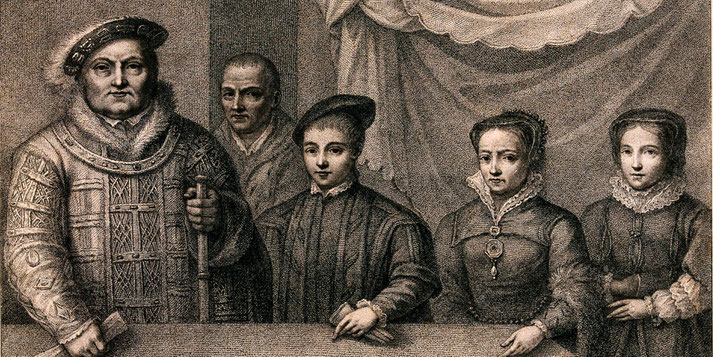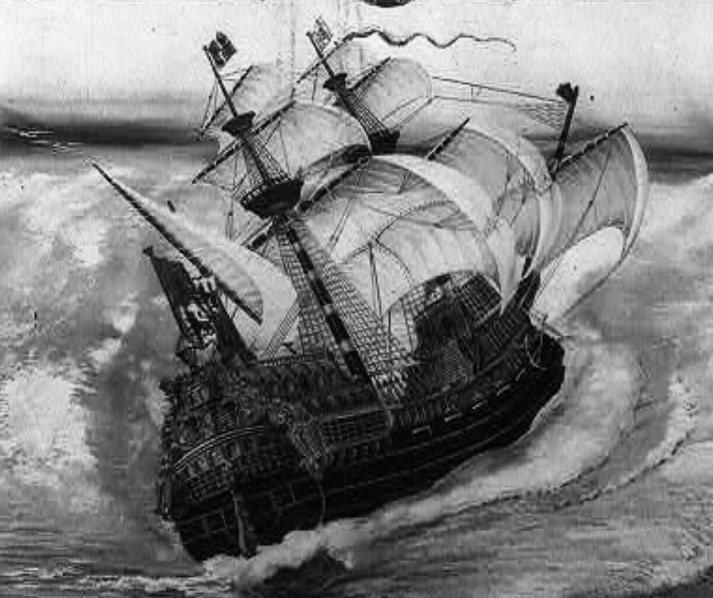Elizabeth I: The Virgin Queen who defined an era

In the late 16th century, in a world dominated by male rulers and rigid religious dogmas, Elizabeth I emerged as a beacon of resilience, intellect, and political savvy.
Her reign, stretching from 1558 until her death in 1603, is often hailed as a "Golden Age" for England—a period of relative stability, cultural flowering, and international prominence.
But who was the woman behind the crown?
And how did she navigate the treacherous waters of 16th-century politics, religion, and gender expectations?
Elizabeth's tragic childhood
Elizabeth was born on September 7, 1533, at Greenwich Palace. She was the daughter of King Henry VIII and his second wife, Anne Boleyn.
Her birth was significant because Henry had broken away from the Roman Catholic Church to marry Anne, hoping she would give him a male heir.
Elizabeth's birth disappointed those who had expected a son, but she was nonetheless declared a princess and given a grand christening.
When Elizabeth was just two and a half years old, her mother, Anne Boleyn, was executed on charges of adultery, incest, and treason.
Elizabeth was subsequently declared illegitimate, and her title was reduced from Princess to Lady Elizabeth.
Elizabeth had two half-siblings: Edward VI, the son of Henry VIII and his third wife, Jane Seymour; and Mary I, the daughter of Henry VIII and his first wife, Catherine of Aragon.
Edward ascended to the throne in 1547 but died young, leading to the reign of Mary I, also known as "Bloody Mary" for her persecution of Protestants.
Elizabeth, a Protestant, was viewed with suspicion during Mary's reign and was even imprisoned in the Tower of London for a time on suspicion of supporting Protestant rebels.

Becoming Queen of England
Elizabeth's half-sister, Mary I, died on November 17, 1558. Mary had no children, and Elizabeth was next in line for the throne.
Upon her ascension, Elizabeth inherited a kingdom fraught with problems. England was financially strained due to military campaigns and the debasement of the currency.
The country was also deeply divided along religious lines, thanks to the oscillations between Catholicism and Protestantism during the reigns of Henry VIII, Edward VI, and Mary I.
Elizabeth was crowned Queen of England on January 15, 1559, in Westminster Abbey.
The ceremony was conducted with Protestant rites but also included certain traditional elements to appease Catholics.
Her choice to use both Protestant and Catholic elements in her coronation was a clear signal of her intent to unify her realm.
One of Elizabeth's first acts as queen was to address the religious divisions in the country.
In 1559, she passed the Act of Supremacy, which re-established the monarch as the Supreme Governor of the Church of England, and the Act of Uniformity, which set the standard form of worship.
These acts were designed to create a middle ground between Catholicism and Protestantism, and they led to the establishment of Anglicanism as the state religion.
Elizabeth was generally well-received by her subjects. Her early actions to stabilize the currency and resolve religious differences won her broad support.
The key people Elizabeth relied upon
Elizabeth I's reign was marked by her ability to surround herself with capable and loyal advisors, as well as her relationships with key figures who played significant roles in her life and governance.
Here are some of the most important people and advisors during her reign:
William Cecil (Lord Burghley)
William Cecil was Elizabeth's chief advisor and one of the most influential figures during her reign. He served as Secretary of State and later as the Lord High Treasurer. Cecil was instrumental in shaping both domestic and foreign policy, including matters related to religion, finance, and diplomacy. His prudent counsel helped Elizabeth navigate the complex political landscape of her time.
Robert Dudley, Earl of Leicester
Robert Dudley was a close friend and rumored lover of Elizabeth. Their relationship was the subject of much speculation and controversy. Dudley was a trusted advisor and held various military and administrative posts. However, his ambition and the scandal surrounding his wife's mysterious death made it politically impossible for Elizabeth to marry him, despite rumors and Dudley's own hopes.
Sir Francis Drake
Sir Francis Drake was an English sea captain, privateer, and explorer. He was a national hero for his exploits against the Spanish, most notably his role in defeating the Spanish Armada in 1588. Elizabeth knighted Drake aboard his ship, the Golden Hind, in 1581, after his circumnavigation of the world.

Sir Walter Raleigh
Sir Walter Raleigh was another favorite of Elizabeth and a man of many talents—explorer, writer, poet, and courtier. He attempted to establish the Roanoke Colony in what is now North Carolina, and although the colony failed, his efforts paved the way for future English colonization in the New World.
Robert Devereux, Earl of Essex
Robert Devereux was a later favorite of Elizabeth who eventually fell from grace. He was given military commands and other privileges but proved to be impulsive and ineffective. His failed rebellion against Elizabeth's government led to his execution in 1601.
Sir Francis Walsingham
Known as Elizabeth's "spymaster", Walsingham created an intricate network of spies and informants across Europe. His efforts were crucial in uncovering plots against Elizabeth, including the Babington Plot, which led to the execution of Mary, Queen of Scots.
The dramatic victory over the Spanish Armada
One of the most defining moments of Elizabeth's reign was the defeat of the Spanish Armada in 1588.
Spain, under King Philip II, was a staunchly Catholic nation and viewed Protestant England as a threat to the Catholic world order.
Philip II, who had been married to Elizabeth's half-sister Mary I, saw it as both a religious duty and a political opportunity to bring England back into the Catholic fold.
In this charged atmosphere, Philip II took the fateful step of assembling a massive naval fleet, known as the Spanish Armada, with the explicit intent of invading England and restoring it to Catholicism.
The fleet was an awe-inspiring sight, consisting of more than 130 ships and an estimated 30,000 men.
It was one of the largest naval armadas ever assembled up to that point and was intended to be Spain's masterstroke in subduing England.
However, the English were far from unprepared. Their navy, although smaller, was technologically advanced and more maneuverable.
Led by seasoned admirals like Sir Francis Drake and John Hawkins, the English engaged the Spanish Armada in a series of skirmishes off the English coast.
A decisive moment came when the English deployed fire ships—vessels deliberately set ablaze—into the anchored Spanish fleet.
This tactic caused chaos among the Spanish ships and broke their tight formation, allowing the English navy to gain the upper hand.
The Spanish Armada was then pursued northward along the English coast, signaling the failure of Spain's grand plan.
The aftermath of this monumental clash was devastating for Spain. Forced to retreat, the Spanish Armada undertook a perilous journey around the British Isles to return home.
Many ships were lost to storms, and thousands of men perished. The defeat was not just a military loss but also a humiliation for Philip II, dealing a significant blow to Spanish prestige on the international stage.
For England, it solidified its reputation as a formidable naval power, altering the balance of power in Europe.
Also, the defeat of the Spanish Armada was interpreted as a divine sign, reinforcing the Protestant faith and solidifying Elizabeth's rule.

The cultural explosion under Elizabeth's rule
The Elizabethan Era became one of the most culturally rich periods in English history, often referred to as a "Golden Age".
This period was marked by a flourishing of the arts, exploration, and intellectual pursuits.
One of the most significant cultural contributions of this era was in the realm of literature and drama.
William Shakespeare, perhaps the most famous figure of the Elizabethan Era, produced works that were performed at the Globe Theatre and enjoyed the patronage of the royal court.
His plays and sonnets have become cornerstones of English literature, influencing countless writers and artists for centuries.
The period was also marked by a thirst for exploration and scientific understanding.
Figures like Sir Francis Drake and Sir Walter Raleigh ventured into uncharted territories, contributing to England's emerging naval and colonial power.

Elizabeth's tumultuous final years and death
The final years of Elizabeth I's reign were marked by difficulties. One of the most significant events of Elizabeth's later reign was the Essex Rebellion in 1601.
Led by Robert Devereux, the Earl of Essex and once a favorite of the Queen, the rebellion was a failed attempt to seize power and influence the succession.
Devereux's execution following the rebellion signaled the end of an era and highlighted the shifting political dynamics as Elizabeth's reign drew to a close.
The rebellion also underscored the Queen's waning influence and the growing anxieties over the unresolved issue of her succession, given that she had neither married nor produced an heir.
Financial difficulties and military setbacks, particularly in Ireland, also plagued the final years of Elizabeth's rule.
Despite these challenges, Elizabeth remained a symbol of national unity and strength.
Her famous "Golden Speech" in 1601, delivered to the members of the House of Commons, was a poignant moment that reflected her deep sense of duty and her understanding of the changing times.
Elizabeth I passed away on March 24, 1603, bringing an end to the Tudor dynasty. She was succeeded by James VI of Scotland, who became James I of England, uniting the crowns of England and Scotland.
Elizabeth I was a complex, multifaceted ruler whose reign had a lasting impact on England and beyond.
She left behind a nation that had transformed from a relatively insignificant island kingdom to a major European power.
Under her rule, England had established itself as a naval force, laid the foundations for future colonial expansion, and experienced a cultural flowering that would leave a lasting impact on the English-speaking world.
As the "Virgin Queen", she broke traditional gender norms, ruling alone in a male-dominated world.
What do you need help with?
Download ready-to-use digital learning resources
Copyright © History Skills 2014-2025.
Contact via email
With the exception of links to external sites, some historical sources and extracts from specific publications, all content on this website is copyrighted by History Skills. This content may not be copied, republished or redistributed without written permission from the website creator. Please use the Contact page to obtain relevant permission.





